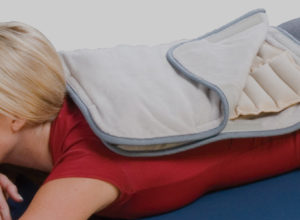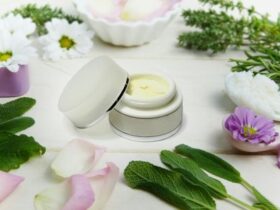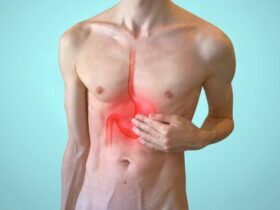Heat therapy is the most effective treatment for many sports-related musculoskeletal injuries. It helps muscles relax and is suitable for muscle pain and stiffness. Heat therapy is applied after chronic injuries to increase elasticity of ligaments and tendons. High temperature increases the blood flow to the injured area thereby improving muscle flexibility.
Cold therapy is applied for pain relief from acute injuries such as accidental fall, twisting movement or direct blow. Once the bleeding has stopped and there are no signs of inflammation, alternate cold and heat treatments is the best option.
Benefits of Heat Therapy-
- Relax Muscles
- Reduce Stiffness
- Alleviate pain
- Decrease muscle spasm
- Promote healing by increasing blood flow to the injured area
When to Apply Heat Therapy?
It is recommended to apply heat therapy after chronic injuries and late stage acute injuries. Chronic pain that does not involve inflammation or swelling responds well to heat therapy. An injury that persists for a broad length of time and occurs due to overuse and biomechanical issues is defined as chronic injury. Heat therapy can be used before exercise to warm the stiff muscles and joints, but should be avoided after workout.
How Heat Therapy Works
Applying heat therapy helps improve the blood circulation to the area, which heals damaged tissues and soothes pain while increasing muscle flexibility. Increased blood circulation also enhances the flow of oxygen and nutrients to the injured area while carbon dioxide and metabolic waste is purged.
Types of Heat Therapy
Two types of heat therapy are dry heat and moist heat therapy.
- Dry heat (conducted heat therapy)– Applied by heating pads, dry heating packs, and saunas.
- Moist heat (convection heat)– Applied by steamed towels, moist heating packs and hot baths.
Moist heat therapy is considered more effective and require less application time for similar results. Professional heat therapy treatments for pain relief from arthritis, tendonitis or fibromyalagia can be applied via ultrasound.
Heat therapy can be applied as local, regional, or whole body treatments. Local heat therapy is suitable for small areas of pain, like stiff muscle in neck or lower back. It can be applied via gel packs or a hot water bottle. Regional heat therapy is best for widespread pain or stiffness, and can be applied with a steamed towel, large heating pad, or heat wraps. Full body heat therapy options include saunas or a hot bath.
How to Apply Heat Therapy
Heat therapy is beneficial when applied for large amount of time, unlike cold therapy, which needs to be limited for 10 to 15 minutes.
Minor stiffness or muscle pain can be relieved with only 15 to 20 minutes of heat therapy. Moderate to severe pain needs longer sessions of heat therapy like warm bath, lasting between 30 minutes and 2 hours.
Heat therapy can be applied at home by using widely available heat packs. They are made of gel or wheat based which require heating in a microwave or submerging in hot water. Wrap the heat pack in a towel and apply it to the injured area for 15-20 minutes at a time. Hot water bottles, warm damp towel, heat rubs can also be used as an alternative.
Tips for Applying Heat Therapy
To safely use heat therapy devices such as a heat pack, a heating pad, a hand towel soaked in hot water, a warm water soak, or a hot water bottle, follow below tips:
- To avoid burns, never let the temperature get uncomfortably high.
- Place a barrier between skin and heat source. You can use gauge dressing, cloth or towel.
- Never apply heat to open wounds or skin that is cut or injured in any way.
- Never apply heat therapy for longer than 20 minutes at a time.
- Heat therapy can be used to stretch muscles and joints as a pre-workout warm-up. Hot gel packs or heated water bottles are perfect for this.
- Prefer hot gel packs or heated water bottles, since they don’t pose any risks of electromagnetic field (EMF) exposure like most electric heating pads.
When Not to Apply Heat Therapy
Heat therapy should not be used if the injured area is either bruised or swollen (or both), cold therapy is recommended in such cases.
- Open Wounds
- Heat injury
- Sensory Disorders (Hyper or hypo-sensitive to heat)
- Circulatory Disorders
- Diabetes
- Dermatitis
- Malignant tumors
- Vascular diseases
- Deep Vein Thrombosis (DVT)
- Multiple sclerosis (MS)
- Infections
People suffering from heart disease or hypertension, should consult with a doctor before using heat therapy. Also pregnant women should check with a physical therapist before using saunas or hot tubs.
If heat therapy is proving to be ineffective and the pain or discomfort continues to persist even after several days, make an appointment to see your doctor.

Dr. Haseena Hamdani, MBBS, DGO, PGD Endocrinology and Diabetes (USW) is a Gynaecologist, currently practicing in Gaborone, Botswana since the last 17 years. Prior to setting up this clinic she worked in India as well as in Zambia, as a Gynaecologist and Obstetrician and was also associated with an Infertility center. She is also an online tutor for the University of South Wales.














Leave a Reply